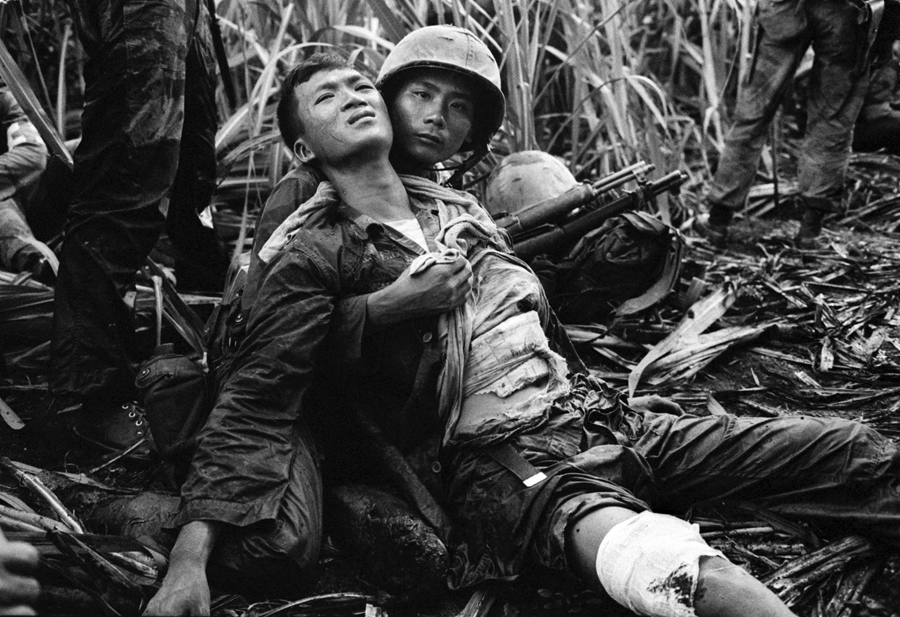While the museum has many more traditional Asian artifacts from Buddhist statues of compassionate deities to ancient Chinese maps, this exhibit is a contemporary dive into current topics of war and torture, sculptural expression of emotion, an undercurrent of beautiful male bodies and a reference to religious ecstasy.
From the exhibit guide: "This exhibition showcases the artist’s series of sculptures depicting young men in pain, sourced from war reportage images found online as well as in newspapers; their titles refer to specific historic political events and conflicts."
The sculptures are
- Action 131: Dying Iranian Soldier, 1987 (2013)
- Action 134: December 31, 1980, Ankara, Turkey (2013)
- Action 133: Dying American Soldier, Baghdad, Iraq, Tuesday, 9 November 2004 (2013)
- Action 132: Saigon, 5 August 1963 (2013)
 |
| Mena: Saint Francis www.nga.org |
In an interview, he says: "In 2010 I saw an incredible exhibition of polychrome sculptures from seventeenth-century Spain, called The Sacred Made Real: Spanish Painting and Sculpture 1600–1700 curated by Xavier Bray at the National Gallery in London. It blew my mind. I kept going back to see the exhibition over and over again. This was the starting point for this series of work. I started looking at the idea and mythology of martyrdom using the material vocabulary of seventeenth-century Spanish artists."
"I began to enter a dialogue with some of the seventeenth-century Spanish artists by creating four polychrome, hand-carved busts of unknown soldiers."
 |
| Andreas Schlüter: Head of a dying warrior (1697) |
My reaction
As I entered the exhibit, I was struck that the four figures were in a circle. I was expecting sculptures on pedestals, that there would be a formal, static, presentation of the art. It created an immediacy, a sense that these were people, very much a live, almost as though they were in an ecstatic dance, not static sculpture depicting death.The sculptures were draped in fabric, presented the men as though wearing robes. The folds of the fabric and the sculpted hoodies echo the monks in Sacred Made Real.
 |
| Reza Aramesh: Action 131: Dying Iranian Soldier, 1987 (2013) |
 |
| Reza Aramesh: Action 132: Saigon, 5 August 1963 (2013) |
 |
| A South Vietnamese Marine, severely wounded in a Viet Cong ambush, is comforted by a comrade in a sugar cane field at Duc Hoa, about 12 miles from Saigon, Aug. 5, 1963. (AP Photo/Horst Faas) |
 |
| Reza Aramesh: Action 134: December 31, 1980, Ankara, Turkey (2013) |
 |
| Action 133: Dying American Soldier, Baghdad, Iraq, Tuesday, 9 November 2004 (2013) |
The exhibit room is wallpapered, adding to the sense that was are in a personal living space, a living room or ballroom.
Aramesh: "The wallpaper is designed in dialogue with a typical eighteenth-century French style. The base color is called eau de Nil (water of the Nile), which was considered a luxurious color that was often used in palaces and stately homes during the nineteenth century. I decided to take a common pattern of the period wallpaper and juxtapose it with some of the violent images of recent wars."
Aramesh: "The wallpaper is designed in dialogue with a typical eighteenth-century French style. The base color is called eau de Nil (water of the Nile), which was considered a luxurious color that was often used in palaces and stately homes during the nineteenth century. I decided to take a common pattern of the period wallpaper and juxtapose it with some of the violent images of recent wars."






No comments:
Post a Comment